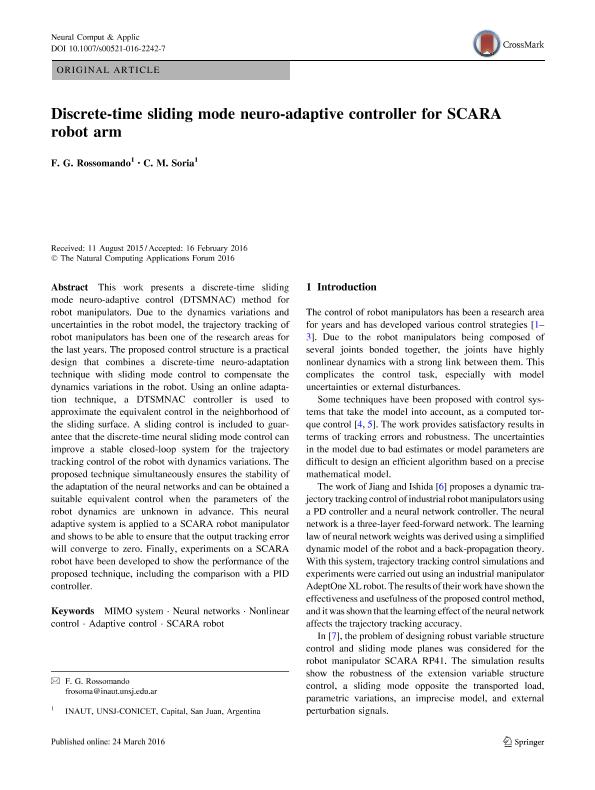Artículo
Discrete-time sliding mode neuro-adaptive controller for SCARA robot arm
Fecha de publicación:
12/2017
Editorial:
Springer
Revista:
Neural Computing And Applications
ISSN:
0941-0643
e-ISSN:
1433-3058
Idioma:
Inglés
Tipo de recurso:
Artículo publicado
Clasificación temática:
Resumen
This work presents a discrete-time sliding mode neuro-adaptive control (DTSMNAC) method for robot manipulators. Due to the dynamics variations and uncertainties in the robot model, the trajectory tracking of robot manipulators has been one of the research areas for the last years. The proposed control structure is a practical design that combines a discrete-time neuro-adaptation technique with sliding mode control to compensate the dynamics variations in the robot. Using an online adaptation technique, a DTSMNAC controller is used to approximate the equivalent control in the neighborhood of the sliding surface. A sliding control is included to guarantee that the discrete-time neural sliding mode control can improve a stable closed-loop system for the trajectory tracking control of the robot with dynamics variations. The proposed technique simultaneously ensures the stability of the adaptation of the neural networks and can be obtained a suitable equivalent control when the parameters of the robot dynamics are unknown in advance. This neural adaptive system is applied to a SCARA robot manipulator and shows to be able to ensure that the output tracking error will converge to zero. Finally, experiments on a SCARA robot have been developed to show the performance of the proposed technique, including the comparison with a PID controller.
Palabras clave:
Adaptive Control
,
Mimo System
,
Neural Networks
,
Nonlinear Control
,
Scara Robot
Archivos asociados
Licencia
Identificadores
Colecciones
Articulos(INAUT)
Articulos de INSTITUTO DE AUTOMATICA
Articulos de INSTITUTO DE AUTOMATICA
Citación
Rossomando, Francisco Guido; Soria, Carlos Miguel; Discrete-time sliding mode neuro-adaptive controller for SCARA robot arm; Springer; Neural Computing And Applications; 28; 12; 12-2017; 3837-3850
Compartir
Altmétricas




